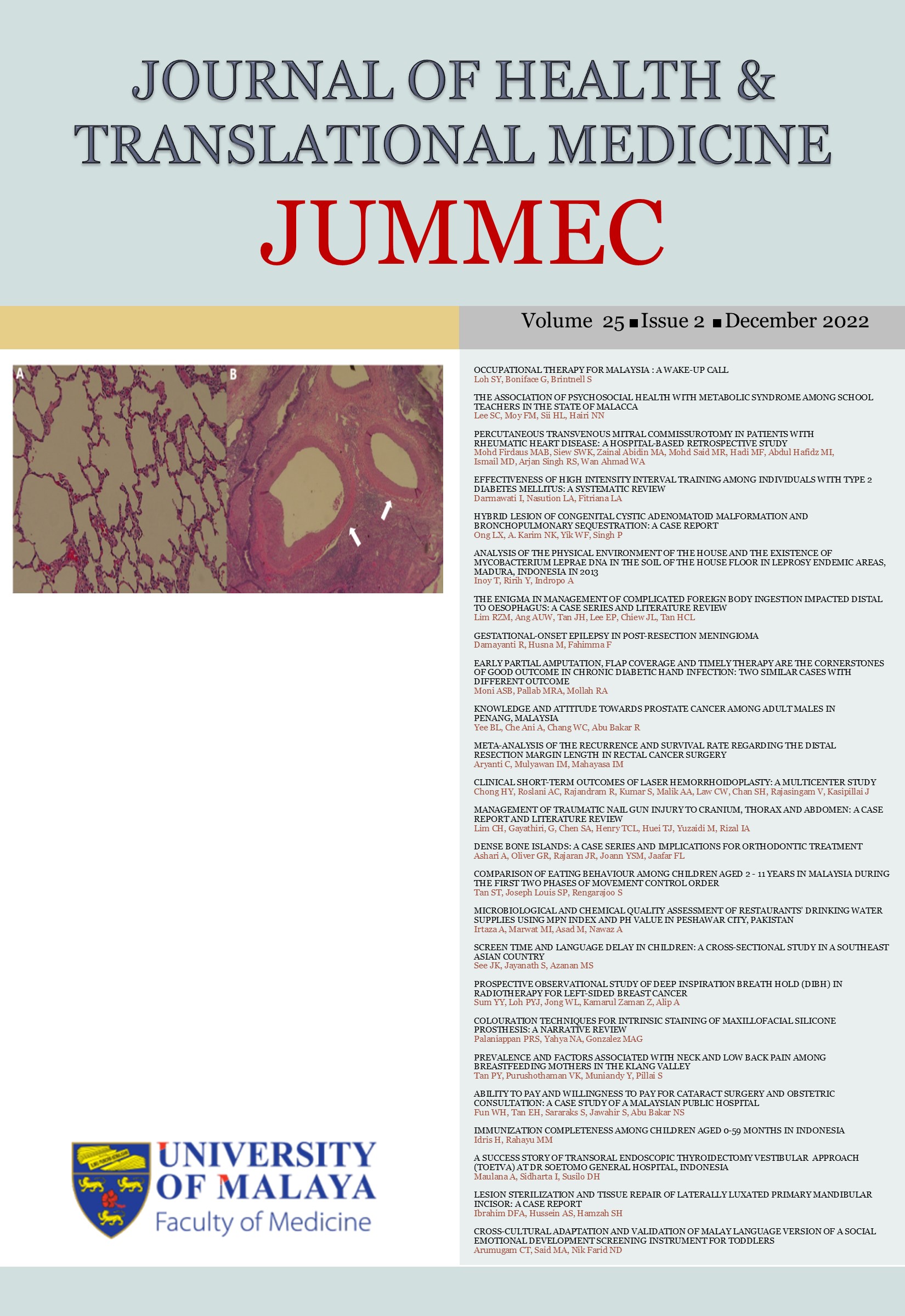LESION STERILIZATION AND TISSUE REPAIR OF LATERALLY LUXATED PRIMARY MANDIBULAR INCISOR: A CASE REPORT
Submission 2021-11-26; Accepted 2022-03-20; Published 2022-12-15
DOI:
https://doi.org/10.22452/jummec.vol25no2.24Keywords:
Lateral luxation; Lesion sterilization and tissue repair; Primary teeth; Repositioning and splinting; Pulp necrosisAbstract
Lateral luxation injuries are common during childhood and in young adolescence. These injuries involve the surrounding tissues that could lead to extensive clinical treatment problems with a risk of pulpal complications such as pulp necrosis. A case of a healthy 4-year old Malay boy visiting the paediatric dental clinic after seven months of laterally luxated injury on the lower right lateral incisor (tooth 82) was reported. The traumatic tooth was splinted by a private practitioner three days after the trauma, however, the splint dislodged less than 24-hour after placement. In view of the mother’s fear of bringing her child to the dentist due to the COVID-19, no follow-up and further treatment were carried out. This has resulted in the development of discolouration and pulpal necrosis to the injured tooth. Lesion sterilization and tissue repair technique (LSTR) was performed. This report highlights the rare occurrence of lateral luxation injury on tooth 82 and the management of pulp necrosis as a complication via lesion sterilization and tissue repair technique due to the uncooperative behaviour of the child.
Downloads
Downloads
Published
Issue
Section
License
All authors agree that the article, if editorially accepted for publication, shall be licensed under the Creative Commons Attribution License 4.0 to allow others to freely access, copy and use research provided the author is correctly attributed, unless otherwise stated. All articles are available online without charge or other barriers to access. However, anyone wishing to reproduce large quantities of an article (250+) should inform the publisher. Any opinion expressed in the articles are those of the authors and do not reflect that of the University of Malaya, 50603 Kuala Lumpur, Malaysia.


